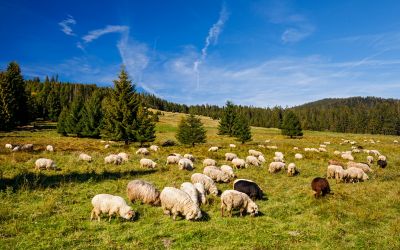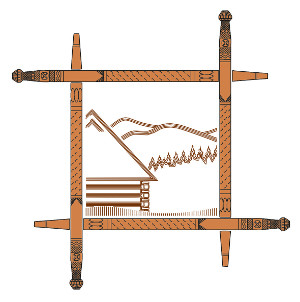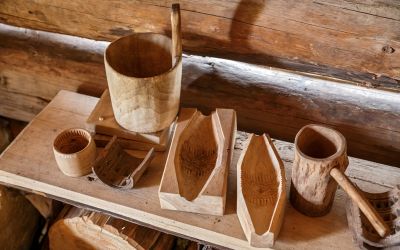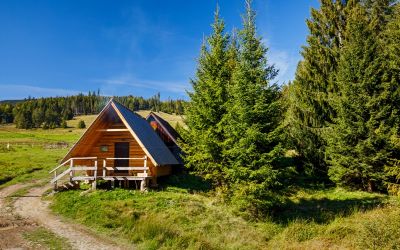In the footsteps of Wołochów around Lesser Poland
We invite you to wander in the footsteps of Wołochów ... 15 thematic routes leading through Lesser Poland, which together form a holistic, cross-sectional image of the shepherd's legacy, for which mountain areas are the background - a context that thanks to the trails gains additional, non-material value.

Czas przejścia:
5:00
Odległość:
15,1
Poziom trudności:
2
Tematyka:
etnografia
Opis produktu
Zubrzyca Górna (Orava Ethnographic Park) - Hala Śmietanowa 3 km (1:00 h) - Krowiarki Pass 2.7 km (1:00 h) - PTTK Markowe Szczawiny Hostel 6.1 km (2:10 h) - Zawoja-Markowa 3.3 km (0:50 h)
The route is recommended for: individual tourists, groups, families with children
There are many hypotheses about the origin of Wołochów. The most popular of them says that this nomadic people came to southern Poland along the Carpathian Mountains, looking for grazing areas for their cattle and sheep. It was these migratory movements that led to the settlement of the Carpathian Arch and the creation of a common, still alive high-mountain pastoral culture.
The stay of the sheep in the pastures was preceded and ended by redyk - the ceremonial departure of shepherds with herds and their return. The grazing season traditionally began on St. Wojciech (April 23), and ended on the day of St. Archangel Michael (September 29). The departure and arrival of shepherds, juhas and sheep to the mountain halls were accompanied by magical rituals, aimed at protecting the herd from evil powers and guaranteeing successful grazing and safe return of sheep to the village.
Despite the fact that itinerant pastoralism, called transhumance, is slowly disappearing in Europe, reykyards having the character of folklore shows are cultivated. This is an amazing opportunity to learn about shepherd's culture. In 2013, the unique Carpathian Redyk was organized - the passage of several hundred sheep along with shepherd dogs, donkeys and horses. The shepherds and their animals traveled about 15 km a day, and their journey totaled over 1200 km. She ran along the Carpathians - from Romania through Ukraine, Poland and Slovakia, and ended in the Czech Republic.
The most important cyclical events associated with reykjays include:
Bacowski festival in Ludźmierz Wielki Redyk in Jaworki Babiogórska Jesień in Zawoja Redyk in Ochotnica Górna Bacowski festival in Mały Cichy Meeting at Kopieniec in Zakopane
Route:
The journey begins in Zubrzyca Górna, known for the Orava Ethnographic Park - a regional heritage park, presenting the history and culture of the Upper Orava region. From here, follow the green trail towards Babia Góra, after about 1:00 h we reach the picturesque Hala Śmietanowa, also called Hala Zubrzycka. In the eighteenth century, it was one of the popular grazing areas and to this day remains one of the few places in the region of Babia Góra, where sheep can still be found. We climb higher and higher southern slopes to reach the Krowiarki Pass after 1:00 h - its name comes from the folk expression of shepherds who used to graze cows here.
Here we meet the blue trail, the so-called Górny Płaj - an old hunting road, built in the second half Nineteenth century. We follow it towards Markowe Szczawiny. This episode is particularly rich in springs. The Upper Płaj crosses valleys of up to 9 streams. After about 2:00 h we reach the PTTK Markowe Szczawiny hostel.
From here, follow the green trail through Suchy Groń to Zawoja. After about 1:00 h we reach the border of the Babiogórski National Park. Near the museum of Józef Żak in Zawoja Markowa - a museum presenting traditional wooden architecture of Babiogórców.
Dodatkowe informacje
Tourist and cultural events in the area:
- Blueberry festival, July, Orava Ethnographic Park.
- Beskid Culture Week, August, Regional Culture Center in Bielsko-Biała.
- Babiogórska Jesień, September, Babiogórska Centrum Kultury.

















